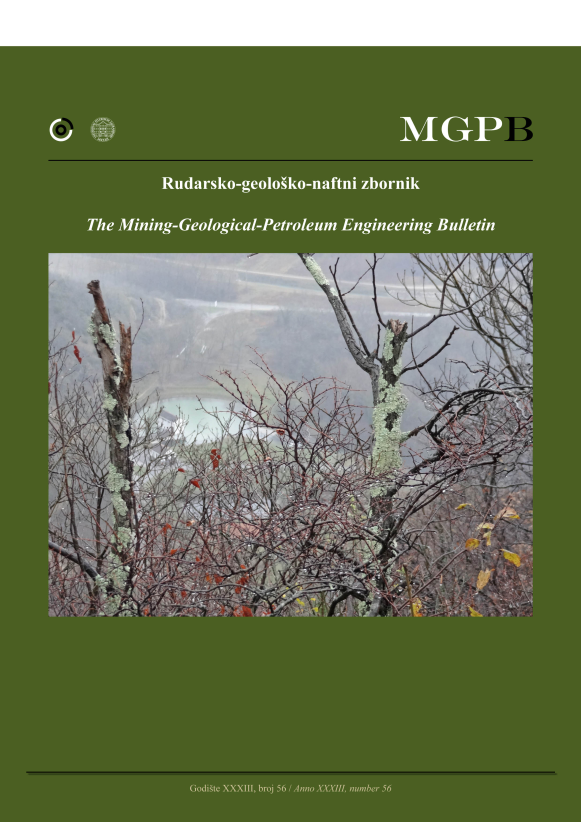Pore structures and reservoir characteristics of volcanic rocks in the Carboniferous Batamayineishan Formation in Shuangjingzi area, eastern Junggar Basin
DOI:
https://doi.org/10.17794/rgn.2021.5.10Keywords:
Junggar Basin; Batamayineishan Formation; Volcanic Reservoir; Pore Structures; Diagenesis; Pore FillingAbstract
Carboniferous oil and gas fields have been found in different areas in the eastern part of the Junggar Basin on a large scale, indicating that the Carboniferous rocks of the Junggar Basin have a huge potential for oil and gas exploration. The Batamayineishan Formation in the eastern part of the Junggar Basin, which contains volcanic rocks and pyroclastic rocks, has been studied to investigate the reservoir characteristics and identify the formation mechanism of the rocks of this formation. Secondary pores and fractures dominate the reservoir space in the volcanic rocks of the Batamayineishan Formation. Using the methods of petrography, pressure-controlled mercury injection (PMI), and electron probe microanalysis (EPMA), the reservoir characteristics and diagenetic history of the volcanic rocks of the Batamayineishan Formation in the Shuangjingzi area were studied. A theoretical framework is established to provide favorable guidance for exploring Carboniferous volcanic rocks in the Junggar Basin. The results of mercury injection indicate that the average pore throat radius and porosity of the volcanic rocks are 0.068 µm and 6.62%, respectively. Permeability remains stable and does not show a significant change with an increase in porosity. Despite the high porosity, the permeability is relatively low, reflecting isolated and non-connected primary pores. The average value of permeability is relatively low (0.424×10-3 µm2), which typically suggests narrow micro-throats. Primary gas pores fill and develop amygdales on a large scale. In addition, the dissolution pores developed by dissolution and alteration also compensated for the decrease in the original gas pore volume.
Downloads
Published
How to Cite
Issue
Section
License
Copyright (c) 2021 authors and journal

This work is licensed under a Creative Commons Attribution 4.0 International License.
Creative Commons-BY
Authors who publish with this journal agree to the following terms:
In agreeing this form, you certify that:
- You read the ethical codex of the RGN zbornik available at journal web.
- You submitted work is your original work, and has not previously been published and does not include any form of plagiarism.
- You own copyright in the submitted work, and are therefore permitted to assign the licence to publish to RGN zbornik.
- Your submitted work contains no violation of any existing copyright or other third party right or any material of an obscene, libellous or otherwise unlawful nature.
- You have obtained permission for and acknowledged the source of any illustrations, diagrams or other material included in the work of which you are not the copyright owner.
- You have taken due care to ensure the accuracy of the work, and that, to the best of your knowledge, there are no false statements made within it.
- All co-authors of this submitted work are aware of, and in agreement with, the terms of this licence and that the submitted manuscript has been approved by these authors.
Publication licence
You retain copyright in your submitted work, according to journal license policy (CC-BY). By signing this form you agree that RGN zbornik may publish it under the publication licence. In summary the licence allows the following:
Anyone is free:
- To copy, distribute, display, and perform the work.
- To make derivative works.
Under the following conditions:
- The original author must always be given credit.
- The work may not be used for commercial purposes.
- If the work is altered, transformed, or built upon, the resulting work may only be distributed under a licence identical to this one.
Exceptions to the licence
In addition to publishing the work printed under the above licence, RGN zbornik will also enable the work to be visible online.
The journal editorial can change the licence rules anytime but it cannot retroactively restrict author(s) rights.


